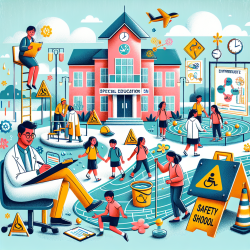As educators and practitioners dedicated to ensuring a safe and conducive learning environment for all students, it is imperative to continuously seek ways to improve our practices and policies. A pivotal aspect of this commitment involves understanding the dynamics of school injuries and implementing strategies to mitigate them. The research article, "Epidemiology of school injuries: A 2-year experience in a municipal health department," offers valuable insights that can guide us in enhancing safety protocols and preventive measures within our educational institutions.
Understanding the Scope of School Injuries
The study provides a comprehensive overview of the incidence and types of injuries occurring in school settings, emphasizing the significance of playground-related incidents. By analyzing data over a two-year period, the researchers have highlighted common injury patterns, such as falls and collisions, which predominantly result in contusions, abrasions, and fractures. These findings underscore the necessity for targeted interventions aimed at reducing the risk of such injuries.
Strategies for Implementing Research Findings
To leverage the outcomes of this research in our practice, we must adopt a multifaceted approach that encompasses the following strategies:
- Enhancing Supervision: Increase adult supervision during recess, physical education classes, and unstructured playtime to promptly address potential hazards and deter risky behaviors.
- Improving Playground Safety: Conduct regular audits of playground equipment and surfaces to ensure compliance with safety standards. This includes repairing damaged equipment and replacing hard surfaces with impact-absorbing materials.
- Educating Students: Implement educational programs that teach children about safe play practices and encourage them to be mindful of their surroundings and peers while engaging in physical activities.
- Engaging Parents and Community: Collaborate with parents, caregivers, and community members to raise awareness about school safety. Encourage their participation in safety initiatives and solicit their feedback on existing policies and practices.
- Policy Review and Development: Regularly review and update school safety policies to reflect current research findings and emerging trends in injury prevention. This should include protocols for emergency response and management of injuries when they occur.
Encouraging Further Research
While the study offers critical insights, it also highlights the need for ongoing research to explore new and innovative strategies for injury prevention in schools. Practitioners should be encouraged to engage in research activities, share their experiences, and contribute to the growing body of knowledge on this topic. Additionally, fostering partnerships with academic institutions can facilitate access to resources and expertise that enhance research efforts.
Conclusion
Implementing the outcomes of the "Epidemiology of school injuries" study within our educational practices can significantly contribute to creating safer learning environments for our students. By adopting a proactive and evidence-based approach to injury prevention, we can mitigate risks and ensure that our schools remain places where children can learn, grow, and thrive without fear of harm. As educators and practitioners, we have a responsibility to continuously seek improvement in our safety protocols, drawing on the latest research and best practices to protect the well-being of all students.
To read the original research paper, please follow this link: Epidemiology of school injuries: A 2-year experience in a municipal health department.










